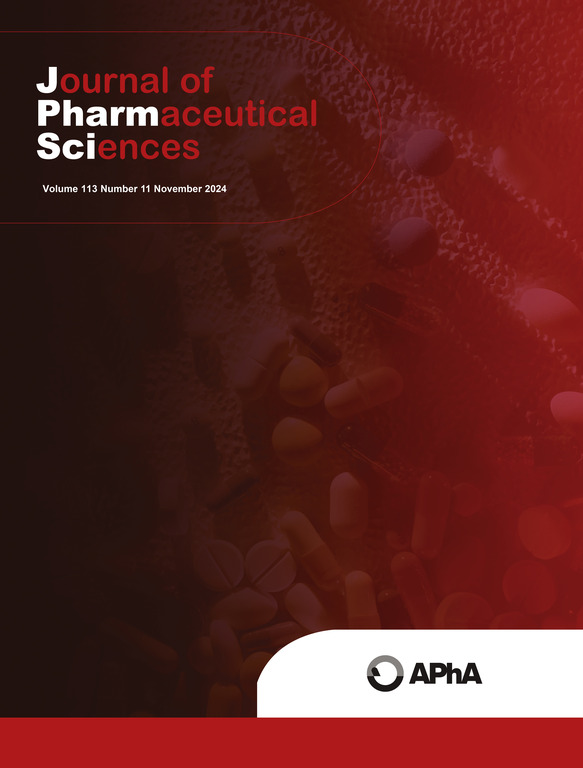The importance of surface composition and wettability on the dissolution performance of high drug loading amorphous dispersion formulations
IF 3.8
3区 医学
Q2 CHEMISTRY, MEDICINAL
引用次数: 0
Abstract
One of the limitations with an amorphous solid dispersion (ASD) formulation strategy is low drug loading. Hydrophobic drugs have poor wettability and require a substantial amount of polymer to stabilize the amorphous drug and facilitate release. Using grazoprevir and hypromellose acetate succinate as model drug and polymer, respectively, the interplay between particle surface composition, particle wettability, and release performance was investigated. A hierarchical particle approach was used where the surfaces of high drug loading ASDs generated by either solvent evaporation or co-precipitation were further modified with a secondary excipient (i.e., polymer or wetting agent). The surface-modified particles were characterized for drug release, wettability, morphology, and surface composition using two-stage dissolution studies, contact angle measurements, scanning electron microscopy, and X-ray photoelectron spectroscopy, respectively. Despite surface modification with hydrophilic polymers, the hierarchical particles did not consistently exhibit good release performance. Contact angle measurements showed that the secondary excipient had a profound impact on particle wettability. Particles with good wettability showed improved drug release relative to particles that did not wet well, even with similar drug loadings. These observations underscore the intricate interplay between particle wettability and performance in amorphous dispersion formulations and illustrate a promising hierarchical particle approach to formulate high drug loading amorphous dispersions with improved dissolution performance.

表面成分和润湿性对高载药量无定形分散制剂溶解性能的重要性。
无定形固体分散体(ASD)配方策略的局限之一是药物负载量低。疏水性药物的润湿性较差,需要大量聚合物来稳定无定形药物并促进释放。本研究分别以格列普韦和醋酸琥珀酸伪丙美洛糖作为模型药物和聚合物,研究了颗粒表面成分、颗粒润湿性和释放性能之间的相互作用。采用分层颗粒法,即在溶剂蒸发或共沉淀产生的高载药量 ASD 表面进一步添加辅助辅料(即聚合物或润湿剂)。利用两阶段溶解研究、接触角测量、扫描电子显微镜和 X 射线光电子能谱分别对表面修饰颗粒的药物释放、润湿性、形态和表面成分进行了表征。尽管使用亲水性聚合物进行了表面修饰,但分层 cPAD 颗粒并没有持续表现出良好的释放性能。接触角测量结果表明,辅助辅料对颗粒的润湿性有很大影响。润湿性好的颗粒与润湿性差的颗粒相比,药物释放效果更好,即使药物载量相似。这些观察结果突显了无定形分散制剂中颗粒润湿性与性能之间错综复杂的相互作用,并说明了一种很有前景的分层颗粒方法,可用于配制具有更好溶解性能的高药物负载无定形分散体。
本文章由计算机程序翻译,如有差异,请以英文原文为准。
求助全文
约1分钟内获得全文
求助全文
来源期刊
CiteScore
7.30
自引率
13.20%
发文量
367
审稿时长
33 days
期刊介绍:
The Journal of Pharmaceutical Sciences will publish original research papers, original research notes, invited topical reviews (including Minireviews), and editorial commentary and news. The area of focus shall be concepts in basic pharmaceutical science and such topics as chemical processing of pharmaceuticals, including crystallization, lyophilization, chemical stability of drugs, pharmacokinetics, biopharmaceutics, pharmacodynamics, pro-drug developments, metabolic disposition of bioactive agents, dosage form design, protein-peptide chemistry and biotechnology specifically as these relate to pharmaceutical technology, and targeted drug delivery.

 求助内容:
求助内容: 应助结果提醒方式:
应助结果提醒方式:


